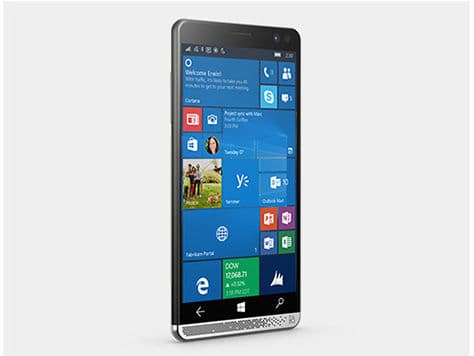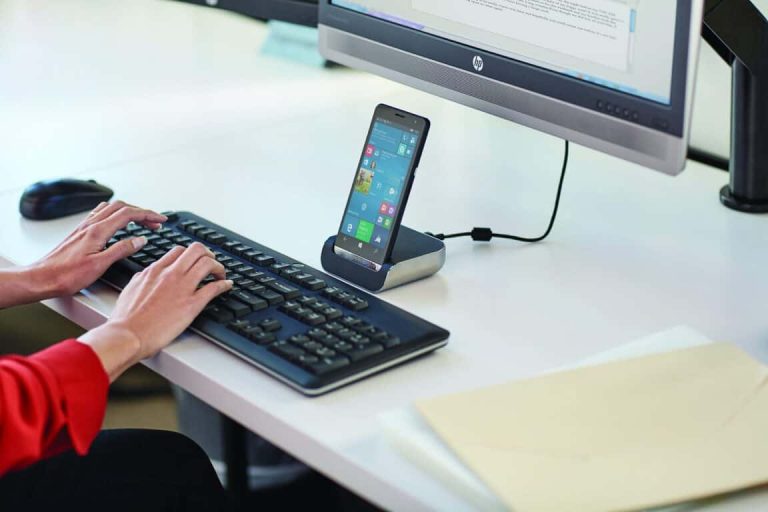HP recently unveiled the Elite X3, an intriguing Windows 10 Mobile device that aims to disrupt mobile computing with beastly specs. The Elite X3 promises a new age of mobile productivity through full embrace of Microsoft’s Continuum technology that comes with Windows 10. Following the announcement, HP’s Vice President and General Manager of Mobility Group Michael Park has had an exclusive conversation with CRN Magazine, where he talks about HP’s work with Microsoft, the opportunities that come with the Elite X3, and much more.
This is the first device being built from the ground up, by design, for Windows Universal App for commercial business.
The Elite X3 is by itself an almost all-encompassingly powerful phone, powered by a Qualcomm Snapdragon 820 with 4GB of RAM, 64GB of storage along with MicroSD expansion, all the connectivity options you could think of, both iris and fingerprint reader, and even water resistance. HP truly pulls no stop when it comes to putting features on its latest handset, and as a result, the Elite X3 is probably the most well-rounded smartphone currently known to exist.
That’s not even its highlighting feature however: true integration with Microsoft Continuum is. The phone comes with a bevy of accessories to utilize Windows 10 Mobile’s desktop-mimicking abilities, including a refined wired desktop dock and what can only be described as a clamshell wireless Continuum dock with a built-in screen. It’s a whole new level of mobility-centric productivity, or ‘commercial mobility’, as Park often stresses in his talk.
The key to doing this right is to have the apps to back up the usability, and to this, HP has taken a two-pronged thinking approach, both from Windows legacy apps and the new Universal Windows Apps (UWA) model.
Windows 10 Continuum and Windows Universal Apps on mobile is leveraging all the investments of the backoffice of Microsoft. There is no additional work required. When you turn it on it just works.
One usually lightly-mentioned but absolutely crucial feature of the Elite X3 is its ability to run Windows legacy apps through virtualization and cloud services; in other words, the missing link in Microsoft’s Continuum. According to Park, most relevant technologies up till now has been about creating app virtualization; in other words, they are not to the end-point of the user. The solution from HP for the Elite X3 is more focused on the way to best pull those apps from the server and use them in the best way on a mobile device with Continuum. The end result is a seamless experience from desktop to mobile on one OS on one set of hardware, saving the trouble for both end-users and corporate IT management.
By our measure there are 122,000 commercial ISVs in the world that haven’t made the transformation fully to mobility.
This new device paradigm also create many opportunities for in-between services regarding cloud services, mobility, sales and customer support. While the Elite X3 will not be coming to carrier channels due to strictly being an enterprise-focus product, resellers will be able to attach their own services on the phone; independent software vendors (ISV) can also benefit from making software that specifically utilize the new capabilities.

UWA has been an essential part of the Continuum experience since day one, and Windows provides many additional benefits that make the prospect of working on an UWA attractive to enterprise developers, including higher security than Android and better integration with the existing Windows environment. It’s less work and money to manage and maintain for CIOs, and Park thinks it’s the right time for UWA to take off; given Windows 10’s positive adoption rate in the enterprise, we’re inclined to agree with him. In fact, Park reveals that even Salesforce.com is building a UWA for Windows; a solid proof of the model’s potential if nothing else.
They are the number one vendor in CRM. We are the number one vendor in commercial PCs. Microsoft is the number one vendor in the OS platform with office productivity. It made natural sense to combine..
Being an enterprise-centric phone means security is a vital consideration, and HP has rightfully not skimped on this regard, adding several layers of security on top of the already-secure Windows Mobile OS. These include chip-based Qualcomm TrustZone, security certifications, and most notably, dual biometrics security: both an iris scanner and a fingerprint reader. The latter of which, not currently available on Windows Mobile, is a joint project with Microsoft exclusively for the Elite X3, making it the first Windows-powered phone that can read fingerprints.
Overall, the Elite X3 sounds like a perfect fit for the enterprise with its innovative use of Continuum, and a desirable device on all accounts; in other words, a “game-changer” in mobile productivity. The challenge, as Park puts it, is helping vendors, partners and users to realize its potential and use them to the fullest, and HP will have to work closely with Microsoft and its stakeholders for that to happen. And they will have plenty of time for it as well, seeing how the Elite X3 is set to launch at the end of summer. Windows 10 Mobile is at a strange place currently, and with rumours of a Surface Phone ever present, we can only hope HP succeeds.


